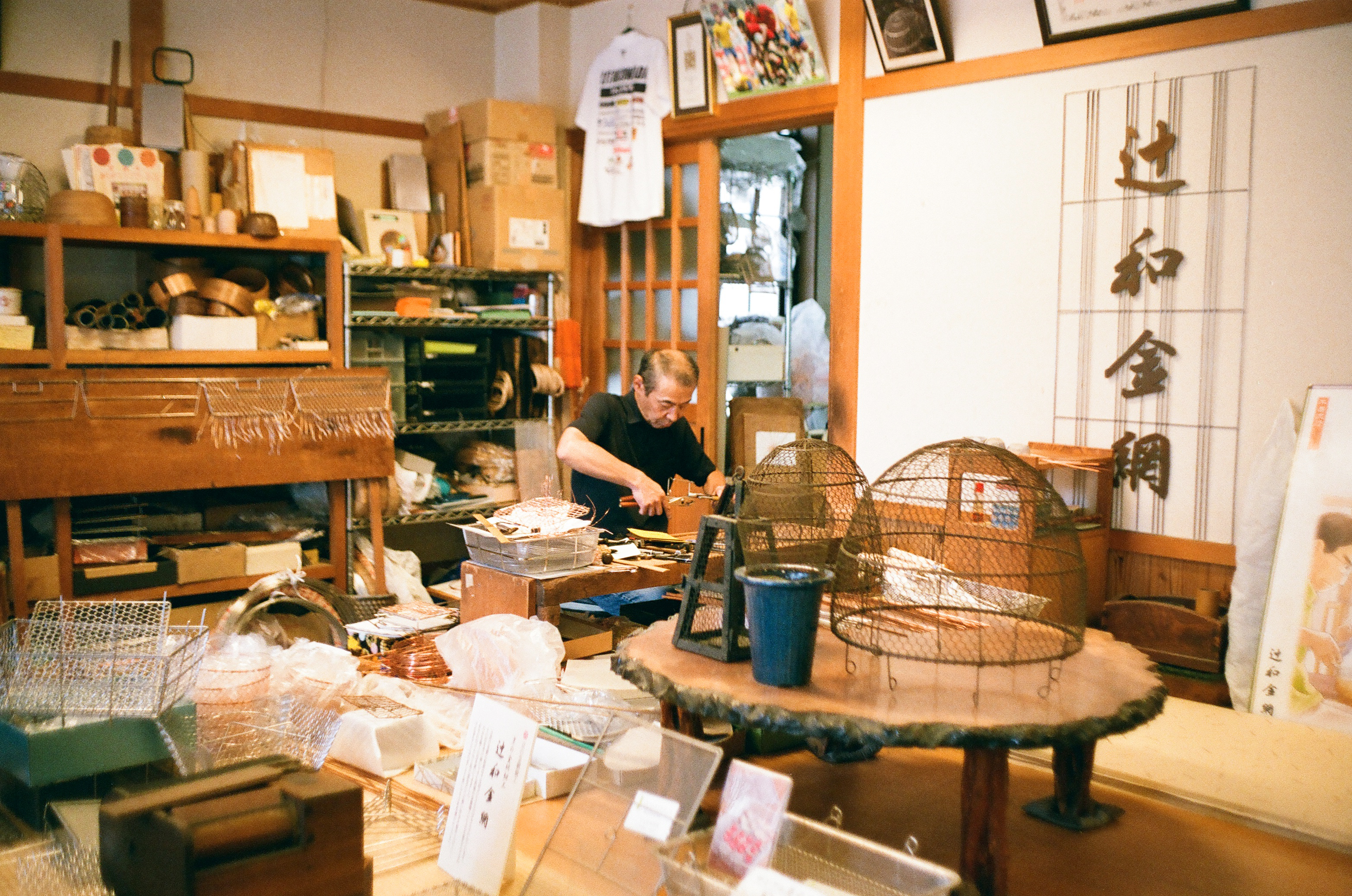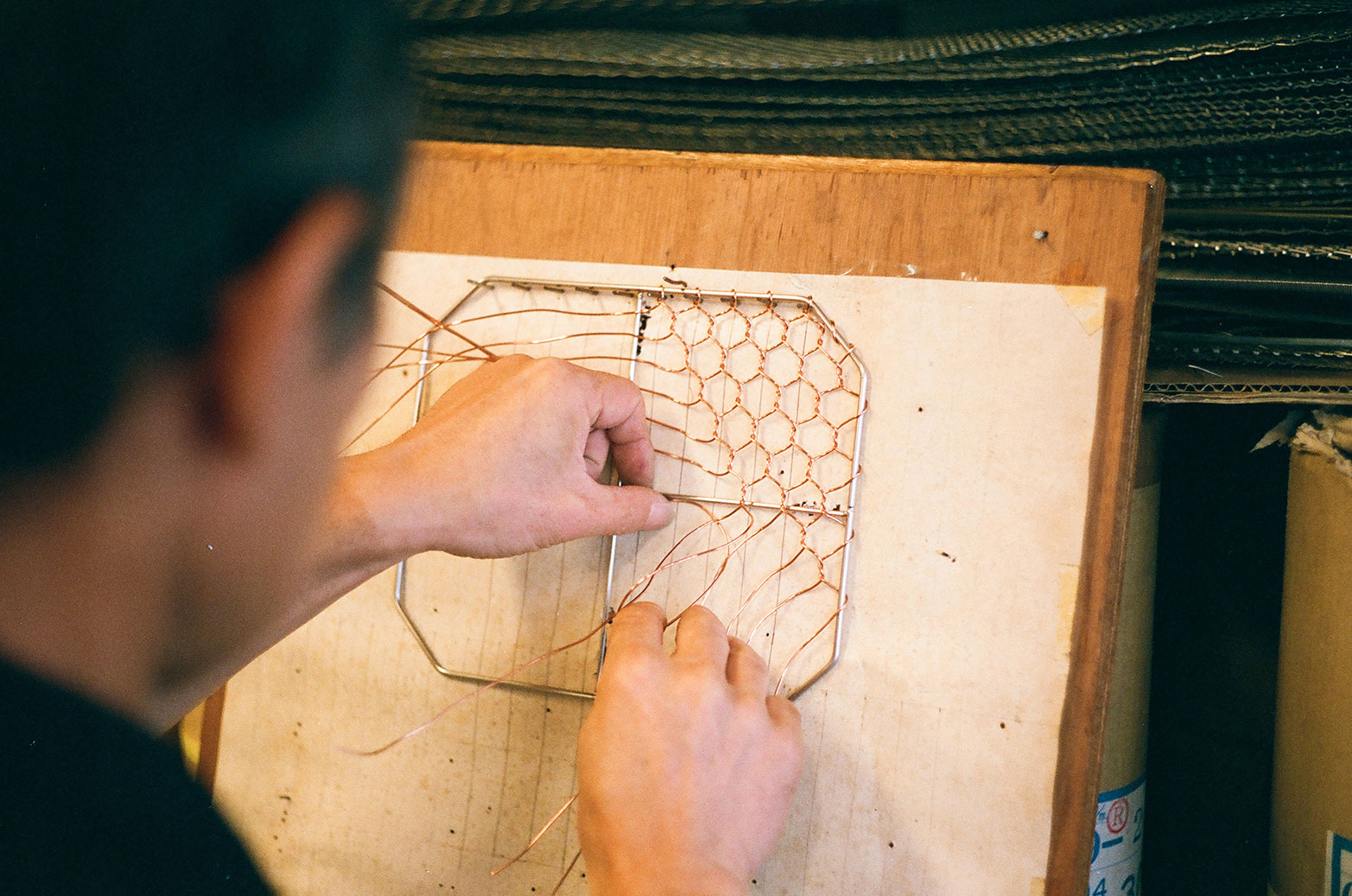
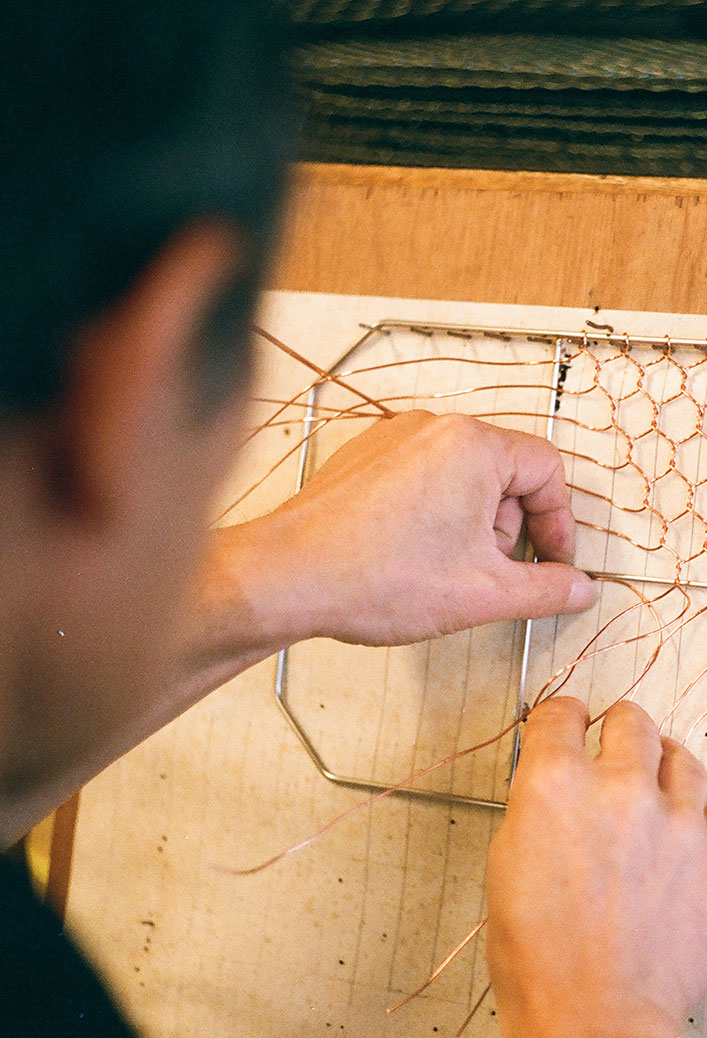
EYEVAN × KYOTO
interview 11
“Wire mesh woven by hand”
Mr. Yoshio Tsuji, 3rd generation of Tsujiwa Kanaami (est. 1934 / Nakagyo-ku, Kyoto)
People often think that both wire mesh and eyeglasses are industrial products made by machines. In fact, some wire mesh and eyeglasses are made by hand. This is because there is something that can only be made by hand. Tsujiwa Kanaami is also woven by hand. We interviewed Mr. Yoshio Tsuji, the 3rd generation of the company, about Tsujiwa’s wire mesh.
About wire mesh
Something that machine can’t make
The origin of Kyoto’s wire mesh is traced back to the Heian period. It started to spread widely during the Meiji period. There were about 60 wire mesh shops in Kyoto at one time. However, due to the introduction of plastic products and mechanization, there are now only about 4 shops. Perhaps that is why handmade craftsmanship with such unique ingenuity developed in such circumstances. The reason why we insist on hand-wiring is because we can meet our customers’ needs. With machine manufacturing, it is difficult to make just one item of a certain size. Our popular product, the grill net, was also born from customer requests. And it got better from costumer’s feedbacks which are like to create a handle or to make net to open for easier washing. The feedback from customers helps a lot.
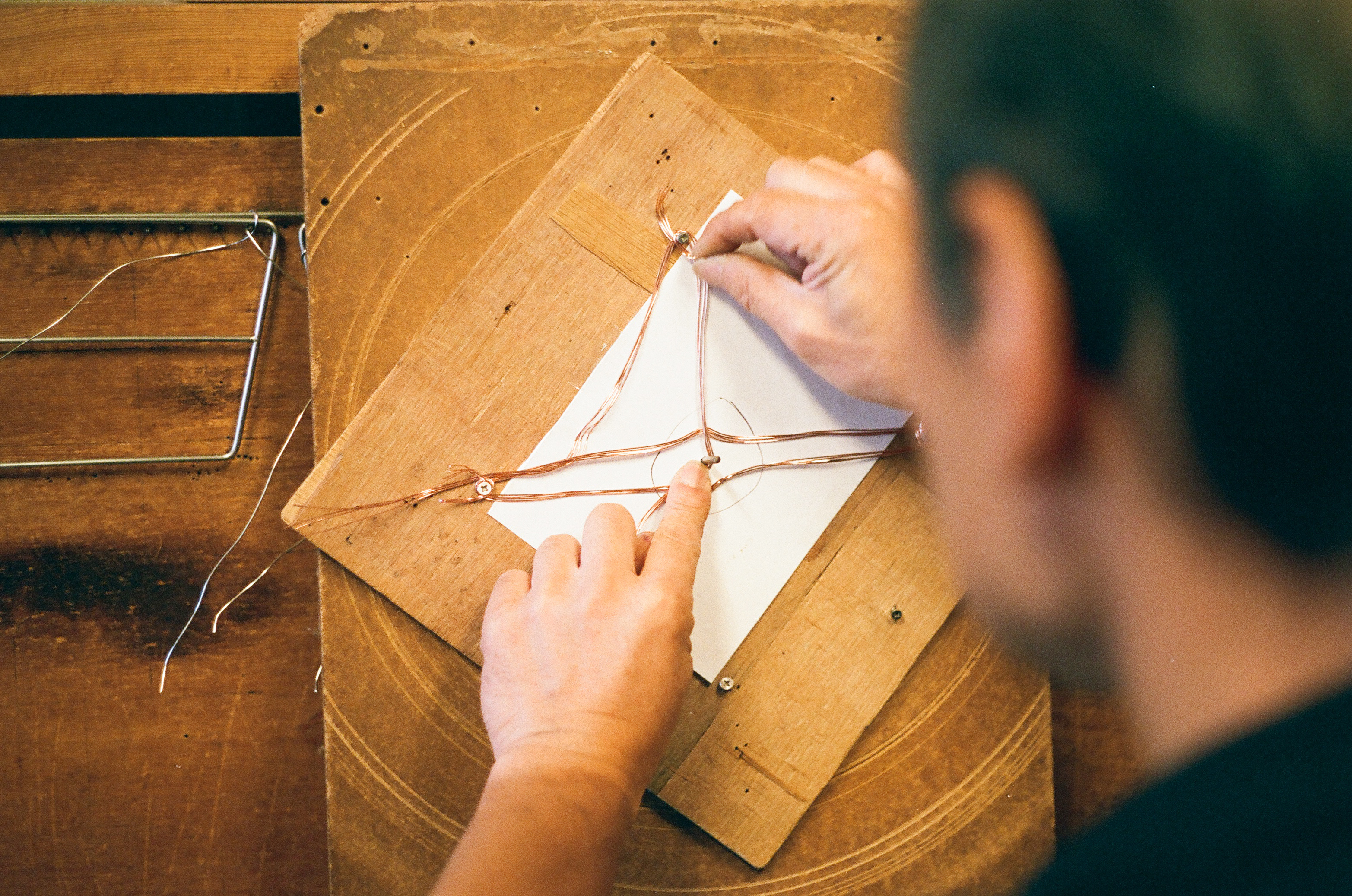
Kyoto is the only place where hand-woven wire netting has survived
We mainly make wire mesh for cooking, such as tea strainers, tofu scoopers, and grill nets. My grandfather was the founder, and the company was founded in 1934, but at that time we were not making commercial products. We had been making products for Japanese restaurants and confectionery shops for a long time. I think the reason wire mesh has been able to survive in Kyoto is because there are many traditional Japanese restaurants and confectionery shops.
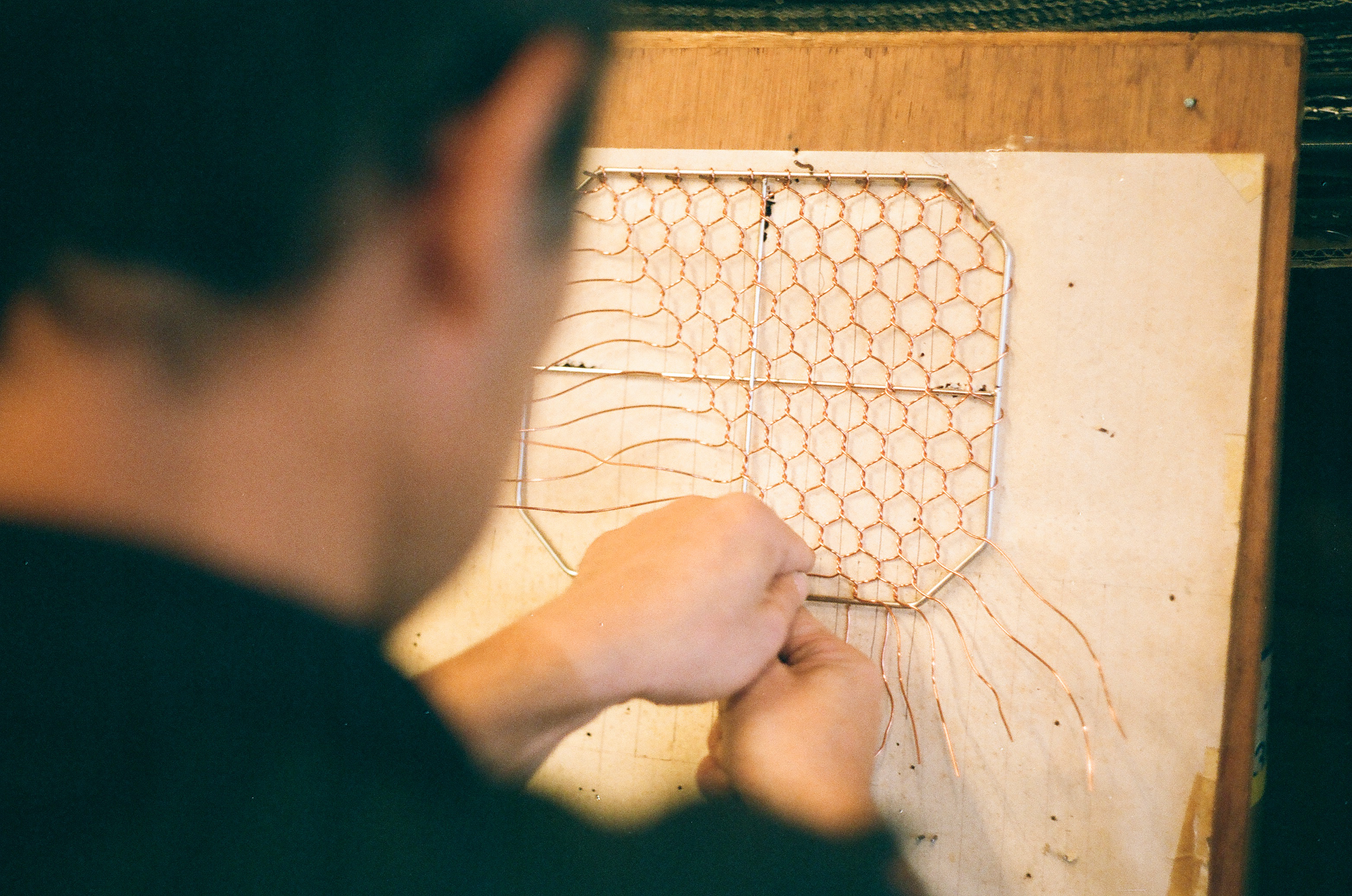
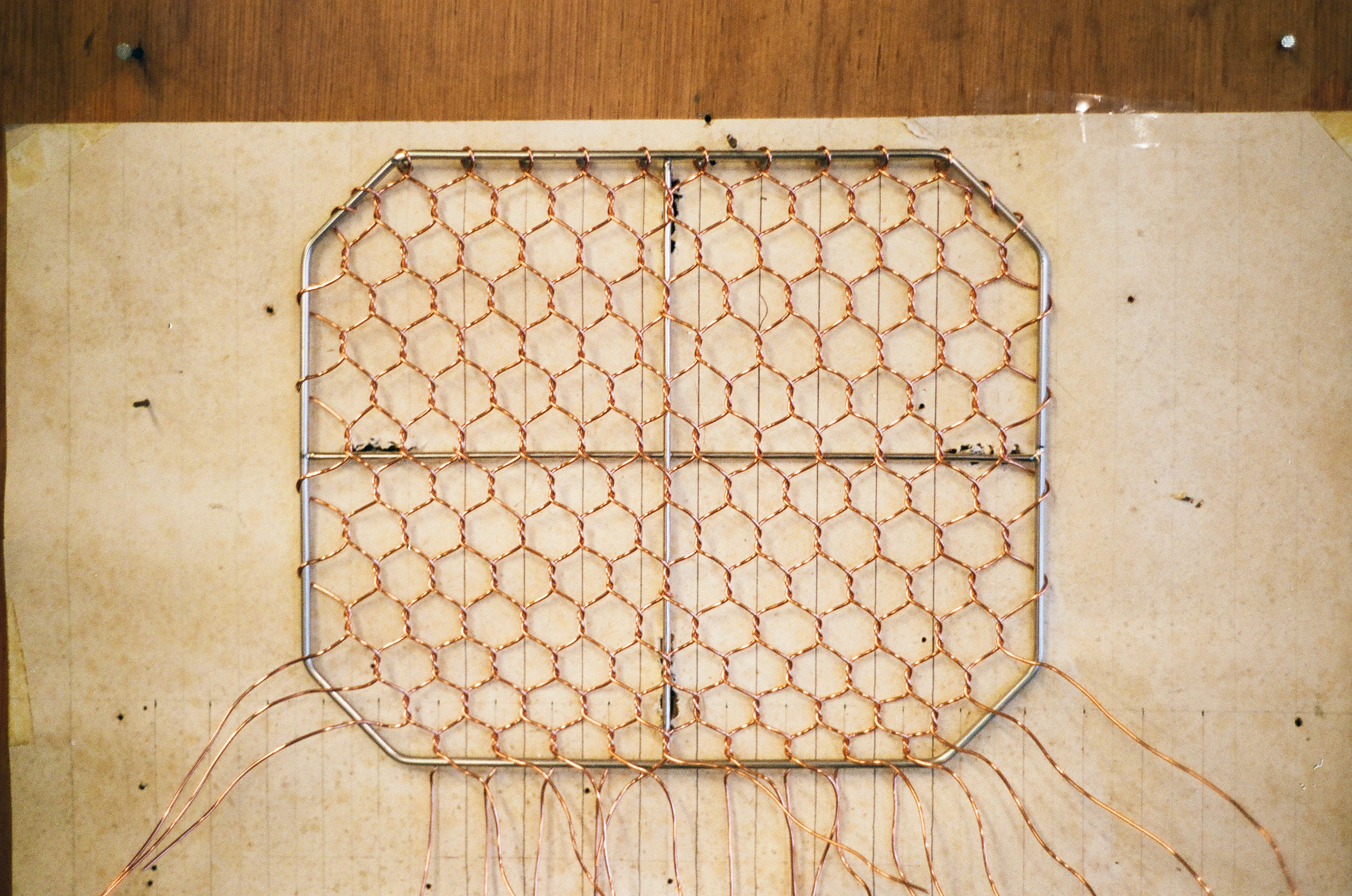
Meaning of tradition
Following the times
We should not too attached to tradition. We must preserve what we must preserve, but if we only stick to that, we will not be able to respond to the times. Time is changing so we need to make our products accordingly. Many of our products are kitchen-related, so we must respond to changes in the kitchen. In the past, kitchens had many places to hang things, but now few places to hang. We pay attention to these points in our manufacturing.
About Succession
I don’t teach everything
For example, even if I teach one technique, each person does it slightly differently. When I look at the mesh, I can tell who wove it. I think it is important how you make the technique your own and get the hang of it in your own way. I teach first few steps, but I try not to teach everything. People learn faster that way.
Our values
First, durability
When I produce a product, I first consider its durability, then its ease of use, and finally its appearance. What makes me happy is when customers tell me that they have been using my products for a long time. I always try to make products which last for a long time.
